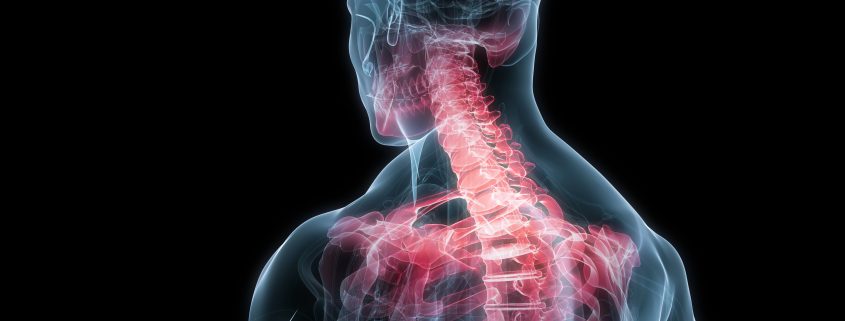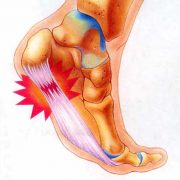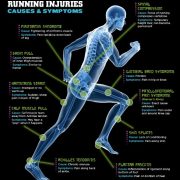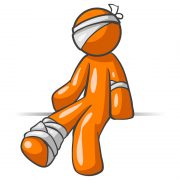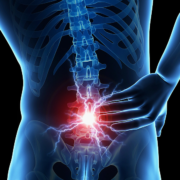Recommendations for Neck Pain and Upper Back Pain- What works and what doesn’t
Neck Pain and Upper Back Pain ( What works, what doesn’t)
American College of Occupational and Environmental Medicine – Medical Specialty Society. 2011
Table 1. Summary of Recommendations for Diagnostic and Other Testing for Cervical and Thoracic Spine Disorders
| Test | Recommendation(s) |
|---|---|
| X-ray | X-ray for acute cervicothoracic pain with red flags for fracture or serious systemic illness, subacute cervicothoracic pain that is not improving, or chronic cervicothoracic pain – Recommended, Insufficient Evidence (I) Flexion and extension views for evaluating symptomatic spondylolisthesis in which there is consideration for surgery or other invasive treatment or occasionally in the setting of trauma – Recommended, Insufficient Evidence (I) Routine x-ray for acute, non-specific cervicothoracic pain – Not Recommended, Insufficient Evidence (I) |
| MRI | Magnetic resonance imaging (MRI) is recommended [Recommended, Evidence (C)] for patients with:
Repeat MRI in the absence of significant new radicular or myelopathy symptoms and/or signs – Not Recommended, Evidence (I). An exception would be agreement on the part of the patient and surgeon that surgery will be performed, and the previous MRI is over 6 months old. |
| Discography | Discography, whether performed as a solitary test or when paired with imaging (e.g., MRI, computed tomography [CT]) for acute, subacute, or chronic cervicothoracic pain or radicular pain syndromes – Not Recommended, Insufficient Evidence (I) |
| MRI Discography | MRI discography for evaluating herniated discs – Not Recommended, Insufficient Evidence (I) |
Table 2: Summary of Recommendations for Managing Cervicothoracic Disorders
| Cervicothoracic Disorder | Treatment with Evidence Rating/Recommendation Level | ||
|---|---|---|---|
| Recommended | No Recommendation | Not Recommended | |
| Acute Cervicothoracic Pain | Sleep posture which is most comfortable for the patient is recommended. If a patient habitually chooses a particular sleep posture, it may be reasonable to recommend altering posture to determine if there is a reduction in pain or other symptoms. (I) Aerobic exercise (I) Specific stretching exercises for acute non-specific cervicothoracic pain (I) Strengthening, endurance, and aerobic exercises (B) Inclusion of fear avoidance belief training during the course of rehabilitation (I) Non-steroidal anti-inflammatory drugs (NSAIDs) (I) Proton pump inhibitors or misoprostol for patients at substantially increased risk for gastrointestinal bleeding (A) Sucralfate for patients at substantially increased risk for gastrointestinal bleeding (B) H2 blockers for patients at substantially increased risk for gastrointestinal bleeding (C) Patients with known cardiovascular disease or multiple risk factors for cardiovascular disease should have the risks and benefits of NSAID therapy for pain discussed. (I) Acetaminophen or aspirin as the first-line therapy appear to be the safest to use for these patients. (A) Acetaminophen for cervicothoracic pain with or without radicular symptoms, particularly for those with contraindications for NSAIDs (I) Capsaicin (capsicum) (I) Muscle relaxants as a second-line treatment in moderate to severe acute cervicothoracic pain that has not been adequately controlled by NSAIDs (C) Judicious use of opioids for acute severe cervicothoracic pain (C) Self-application of low-tech cryotherapies (I) Heat therapy, including a heat wrap (C) Manipulation/mobilization for short-term relief of cervical pain or as a component of an active treatment program focusing on active exercises (B) Massage for acute cervicothoracic pain in which pain is a substantial symptom component (I) Fear avoidance belief training, particularly if there are any suggestions of fear avoidance belief issues (I) |
Educational programs and education for prevention of cervicothoracic pain (I) Use of specific commercial products (e.g., neck pillows) (I) Stretching exercises as an isolated prescription or program for preventing cervicothoracic pain (I) Aquatic therapy (I) Yoga (I) Creams and ointments (I) Thiocolchicoside (I) Willow bark (Salix), ginger extract, rose hips, camphora molmol, maleluca alternifolia, angelica sinensis, aloe vera, thymus officinalis, menthe peperita, arnica montana, curcuma longa, tancaetum parthenium, and zingiber officinicalis, avocado soybean unsaponifiables, oral enzymes, topical copper salicylate, S-Adenosylmethionine, and diacerin harpagoside (I) Magnets (I) Infrared therapy (I) Ultrasound is desirable for treatment of acute cervicothoracic pain, but only as an adjunct with exercise. (I) Low-level laser therapy (I) |
Educational programs as a sole treatment (I) Rest and immobilization (B) Absent other indicators of a need for treatment with tricyclic anti-depressants (TCAs) and serotonin norepinephrine reuptake inhibitors (SNRIs), anti-depressants are not recommended. (I) Oral and intravenous (IV) colchicines (I) Glucocorticosteroids (I) Muscle relaxants for mild to moderate acute cervicothoracic pain (I) Routine use of opioids for acute non-malignant pain conditions (C) Vitamins (I) Routine use of acupuncture (I) Routine use of cryotherapies in health care provider offices or home use of a high-tech device (I) Diathermy (C) Regular or routine manipulation or mobilization, prolonged treatment (manipulation several times a month for years), and prophylactic treatment (I) Manipulation under anesthesia (MUA) and medication-assisted spinal manipulation (MASM) (I) Mechanical devices for administering massage (I) Myofascial release (I) Neuroreflexotherapy for acute cervicothoracic pain with or without radicular pain (I) Subcutaneous carbon-dioxide insufflation (B) Traction (C) Interferential therapy for acute cervicothoracic pain with or without radiculopathy (I) Iontophoresis (I) Microcurrent electrical stimulation (I) Transcutaneous electrical nerve stimulation (TENS) (I) Botulinum injections for non-specific acute cervical pain (C) Continuous infusion of corticosteroids and local anesthetic for acute cervicothoracic pain with or without radiculopathy (I) Epidural glucocorticosteroid injections for acute cervical pain in the absence of significant radicular symptoms (I) Facet joint injections with hyaluronic acid for acute cervicothoracic pain with or without radicular pain syndromes (I) Intradiscal electrothermal therapy for acute cervicothoracic pain with or without radicular pain syndromes (I) Percutaneous intradiscal radiofrequency thermocoagulation for acute cervicothoracic pain with or without radicular pain syndromes (I) Prolotherapy injections for acute cervicothoracic pain with or without radicular pain syndromes (I) Percutaneous discectomy (nucleoplasty), laser discectomy, and disc coblation therapy (I) Discectomy for acute cervical or thoracic pain without radiculopathy (I) Work conditioning/work hardening programs for acute cervicothoracic pain with or without radicular pain syndromes (I) Cognitive behavioral therapy for acute cervicothoracic pain with or without radicular pain syndromes (I) |
| Subacute Cervicothoracic Pain | Educational programs for select patients (I) Sleep posture which is most comfortable for the patient is recommended. If a patient habitually chooses a particular sleep posture, it may be reasonable to recommend altering posture to determine if there is a reduction in pain or other symptoms. (I) Aerobic exercise (I) Specific stretching exercises for subacute non-specific cervicothoracic pain (I) Strengthening, endurance, and aerobic exercises (B) Inclusion of fear avoidance belief training during the course of rehabilitation (I) NSAIDs (I) Proton pump inhibitors or misoprostol for patients at substantially increased risk for gastrointestinal bleeding (A) Sucralfate for patients at substantially increased risk for gastrointestinal bleeding (B) H2 blockers for patients at substantially increased risk for gastrointestinal bleeding (C) Patients with known cardiovascular disease or multiple risk factors for cardiovascular disease should have the risks and benefits of NSAID therapy for pain discussed. (I) Acetaminophen or aspirin as the first-line therapy appear to be the safest to use for these patients. (A) Acetaminophen for cervicothoracic pain with or without radicular symptoms, particularly for those with contraindications for NSAIDs (I) Capsaicin (capsicum) (I) Opioids for select patients (I) Heat therapy, including a heat wrap (C) Manipulation/mobilization of the cervical and/or thoracic spine for short-term relief of cervical pain (B) Massage for subacute cervicothoracic pain in which pain is a substantial symptom component (I) Chronic pain management/functional restoration programs can be used with caution in late subacute phase if their cost can be justified based on early development of major psychosocial barriers to recovery, opioid dependence, severe post-operative complications, severe mood disorders, or complicating co-morbid conditions (I) Work conditioning/work hardening for subacute cervicothoracic pain with or without radicular pain syndromes (I) Participatory ergonomic programs, where available, for highly select patients with subacute cervicothoracic pain who remain off work or on a different job and where there is managerial support and interest (I) Cognitive behavioral therapy as a component of a formal interdisciplinary program (I) Fear avoidance belief training, particularly if there are any suggestions of fear avoidance belief issues (I) A multidisciplinary rehabilitation program with a participatory ergonomics team for patients with subacute cervicothoracic pain with lost-time injuries (I) |
Educational programs and education for prevention of cervicothoracic pain (I) Use of specific commercial products (e.g., neck pillows) (I) Stretching exercises as an isolated prescription or program for preventing cervicothoracic pain (I) Aquatic therapy (I) Yoga (I) Creams and ointments (I) Thiocolchicoside (I) Willow bark (Salix), ginger extract, rose hips, camphora molmol, maleluca alternifolia, angelica sinensis, aloe vera, thymus officinalis, menthe peperita, arnica montana, curcuma longa, tancaetum parthenium, and zingiber officinicalis, avocado soybean unsaponifiables, oral enzymes, topical copper salicylate, S-Adenosylmethionine, and diacerin harpagoside (I) Magnets (I) Infrared therapy (I) Ultrasound (I) Low-level laser therapy (I) |
Rest (I) Absent other indicators of a need for treatment with TCAs and SNRIs, anti-depressants are not recommended. (I) Oral and intravenous colchicines (I) Glucocorticosteroids (I) Muscle relaxants (I) Routine use of opioids for subacute non-malignant pain conditions (C) Vitamins (I) Routine use of acupuncture (I) Routine use of cryotherapies in health care provider offices or home use of a high-tech device (I) Diathermy (C) Regular or routine manipulation or mobilization, prolonged treatment manipulation several times a month for years), and prophylactic treatment (I) MUA and MASM (I) Mechanical devices for administering massage (I) Myofascial release (I) Neuroreflexotherapy for subacute cervicothoracic pain with or without radicular pain (I) Subcutaneous carbon-dioxide insufflation (B) Traction (C) Interferential therapy for subacute pain with or without radicular pain (I) Iontophoresis (I) Microcurrent electrical stimulation (I) TENS (I) Botulinum injections for non-specific subacute acute cervical pain (C) Continuous infusion of corticosteroids and local anesthetic for subacute cervicothoracic pain with or without radiculopathy (I) Epidural glucocorticosteroid injections for subacute cervical pain in the absence of significant radicular symptoms (I) Facet joint injections with hyaluronic acid for subacute cervicothoracic pain with or without radicular pain syndromes (I) Intradiscal electrothermal therapy for subacute cervicothoracic pain with or without radicular pain syndromes (I) Percutaneous intradiscal radiofrequency thermocoagulation for subacute cervicothoracic pain with or without radicular pain syndromes (I) Prolotherapy injections for subacute cervicothoracic pain with or without radicular pain syndromes (I) Percutaneous discectomy (nucleoplasty), laser discectomy, and disc coblation therapy (I) Discectomy for subacute cervical pain or thoracic pain without radiculopathy (I) |
| Chronic Cervicothoracic Pain | Educational programs for select patients (I) Sleep posture which is most comfortable for the patient is recommended. If a patient habitually chooses a particular sleep posture, it may be reasonable to recommend altering posture to determine if there is a reduction in pain or other symptoms. (I) Aerobic exercise (I) Stretching (C) Strengthening, endurance, and aerobic exercises (B) Inclusion of fear avoidance belief training during the course of rehabilitation (I) NSAIDs (I) Proton pump inhibitors or misoprostol for patients at substantially increased risk for gastrointestinal bleeding (A) Sucralfate for patients at substantially increased risk for gastrointestinal bleeding (B) H2 blockers for patients at substantially increased risk for gastrointestinal bleeding (C) Patients with known cardiovascular disease or multiple risk factors for cardiovascular disease should have the risks and benefits of NSAID therapy for pain discussed. (I) Acetaminophen or aspirin as the first-line therapy appear to be the safest to use for these patients. (A) Acetaminophen for cervicothoracic pain with or without radicular symptoms, particularly for those with contraindications for NSAIDs (I) Norepinephrine reuptake inhibitor antidepressants (TCAs) and dual reuptake inhibitors (SNRIs) – e.g., amitriptyline, imipramine, nortriptyline, maprotiline, doxepin, duloxetine, venlafaxine (C) Topiramate for limited use in select patients as a fourth- or fifth-line agent (I) Capsaicin (capsicum) for temporary flare-ups of chronic cervicothoracic pain (I) Opioids for select patients (I) Acupuncture for select use in chronic cervicothoracic pain with or without radicular symptoms as an adjunct to facilitate more effective treatments (C) Heat therapy, including a heat wrap (C) Manipulation/mobilization of the cervical and/or thoracic spine for short-term relief of cervical pain (B) Massage for select use in chronic cervicothoracic pain as an adjunct to more efficacious treatments consisting primarily of a graded aerobic and strengthening exercise program (C) TENS for select use as an adjunct for more efficacious, active treatments (C) Chronic pain management/functional restoration programs for chronic spinal pain, particularly those programs that focus on functional outcomes (I) Work conditioning/work hardening for chronic cervicothoracic pain with or without radicular pain syndromes (I) Participatory ergonomic programs, where available, for highly select patients with chronic cervicothoracic pain who remain off work or on a different job and where there is managerial support and interest (I) Cognitive behavioral therapy as a component of a formal interdisciplinary program (I) Fear avoidance belief training, particularly if there are any suggestions of fear avoidance belief issues (I) A multidisciplinary rehabilitation program with a focus on cognitive behavioral, occupational, and activity-based approaches combined with aerobic exercise and other conditioning exercise for patients with chronic cervicothoracic pain who are not working due to cervicothoracic pain (I) A multidisciplinary rehabilitation program with a participatory ergonomics team for patients with chronic cervicothoracic pain with lost-time injuries (I) |
Educational programs and education for prevention of cervicothoracic pain (I) Use of specific commercial products (e.g., neck pillows) (I) Stretching exercises as an isolated prescription or program for preventing cervicothoracic pain (I) Aquatic therapy (I) Yoga (I) Creams and ointments (I) Thiocolchicoside (I) Willow bark (Salix), ginger extract, rose hips, camphora molmol, maleluca alternifolia, angelica sinensis, aloe vera, thymus officinalis, menthe peperita, arnica montana, curcuma longa, tancaetum parthenium, and zingiber officinicalis, avocado soybean unsaponifiables, oral enzymes, topical copper salicylate, S-Adenosylmethionine, and diacerin harpagoside (I) Magnets (I) Infrared therapy (I) Ultrasound (I) Low-level laser therapy (I) Use of radiofrequency neurotomy, neurotomy, and facet rhizotomy for chronic cervicothoracic pain confirmed with diagnostic blocks, but who do not have radiculopathy and who have failed conservative treatment (I) Radiofrequency lesioning of the dorsal root ganglia for chronic cervical pain with or without radiculopathy (I) Vertebroplasty for highly select patients with low back or thoracic pain due to unusual vertebral compression fractures (I) Kyphoplasty for patients with low back or thoracic pain due to vertebral compression fractures (I) |
Rest (I) Selective serotonin reuptake inhibitors, (e.g., paroxetine, as well as bupropion and trazodone) (I) Gabapentin for chronic non-neuropathic pain or cervicothoracic pain (I) Oral and intravenous colchicines (I) Glucocorticosteroids for chronic cervicothoracic pain without radicular pain (I) Muscle relaxants (I) Routine use of opioids for chronic non-malignant pain conditions (C) Vitamins (I) Routine use of cryotherapies in health care provider offices or home use of a high-tech device (I) Diathermy (C) Regular or routine manipulation or mobilization, prolonged treatment manipulation several times a month for years), and prophylactic treatment (I) MUA and MASM (I) Mechanical devices for administering massage (I) Myofascial release (I) Neuroreflexotherapy for chronic cervicothoracic pain with or without radicular pain (I) Subcutaneous carbon-dioxide insufflations for chronic cervicothoracic pain with or without radiculopathy (B) Traction (C) Interferential therapy for chronic cervicothoracic pain with or without radicular pain (I) Iontophoresis (I) Microcurrent electrical stimulation for chronic cervicothoracic pain with or without radicular pain syndromes (I) High voltage galvanic therapy for chronic cervicothoracic pain (I) Botulinum injections for non-specific chronic cervical pain (C) Epidural steroid injections for chronic cervicothoracic pain with radicular symptoms (C) Continuous infusion of corticosteroids and local anesthetic for chronic cervicothoracic pain with or without radiculopathy (I) Epidural glucocorticosteroid injections for chronic cervical pain in the absence of significant radicular symptoms (I) Facet joint injections with hyaluronic acid for chronic cervicothoracic pain with or without radicular pain syndromes (I) Intradiscal electrothermal therapy for chronic cervicothoracic pain with or without radicular pain syndromes (I) Percutaneous intradiscal radiofrequency thermocoagulation for chronic cervicothoracic pain with or without radicular pain syndromes (I) Prolotherapy injections for chronic cervicothoracic pain with or without radicular pain syndromes (I) Percutaneous discectomy (nucleoplasty), laser discectomy, and disc coblation therapy (I) Discectomy for chronic cervical or thoracic pain without radiculopathy (I) Cervical fusion for chronic non-specific cervical pain (I) Disc replacement for chronic non-specific cervical pain or other spinal pain syndromes (I) Vertebroplasty as a routine treatment for patients with low back or thoracic pain due to vertebral compression fractures (A) Spinal cord stimulators for chronic cervicothoracic pain with or without radiculopathy (I) |
| Peri-operative Pain | Gabapentin for peri-operative management of pain to reduce need for opioids, particularly in patients with adverse effects from opioids (I) | ||
| Post-operative Cervicothoracic Pain | Aerobic exercise (I) NSAIDs (I) Muscle relaxants as second- or third-line agents for acute post-surgical patients (I) Judicious use of opioids (I) |
Vitamins (I) | |
| Radicular Pain Syndromes | Educational programs for select patients (I) NSAIDs (I) Proton pump inhibitors or misoprostol for patients at substantially increased risk for gastrointestinal bleeding (A) Sucralfate for patients at substantially increased risk for gastrointestinal bleeding (B) H2 blockers for patients at substantially increased risk for gastrointestinal bleeding (C) Patients with known cardiovascular disease or multiple risk factors for cardiovascular disease should have the risks and benefits of NSAID therapy for pain discussed (I). Acetaminophen or aspirin as the first-line therapy appears to be the safest to use for these patients (A). Acetaminophen for cervicothoracic pain with or without radicular symptoms, particularly for those with contraindications for NSAIDs (I) Norepinephrine reuptake inhibitors (TCAs) and dual reuptake inhibitors (SNRIs) (I) Carbamazepine as a potential adjunct as a fourth- or fifth-line treatment for chronic radicular pain after attempting other treatments – e.g., different NSAIDs, aerobic exercise, other exercise, manipulation (I) Glucocorticosteroids for acute severe radicular pain syndromes for purposes of obtaining a short-term reduction in pain (I) Muscle relaxants as second-or third-line agents for acute severe radicular pain syndromes (I) Massage for chronic radicular syndromes in which cervicothoracic pain is a substantial symptom component (I) An epidural glucocorticosteroid injection as an option for acute or subacute radicular pain syndromes (I) Cervical discectomy with fusion to speed recovery in patients with chronic radiculopathy due to ongoing nerve root compression who continue to have significant pain and functional limitation after at least 6 weeks of time and appropriate non-operative therapy (I) Thoracic discectomy for treatment of patients with ongoing nerve root compression who continue to have significant pain and functional limitation after at least 3 months of time and appropriate non-operative therapy (I) Artificial disc replacement for subacute or chronic radiculopathy (B) |
Gabapentin for chronic radicular pain syndromes (I) Infrared therapy (I) Manipulation for radicular pain syndromes without neurologic deficits (I) |
Rest (I) In the absence of documented deficiencies or other nutritional deficit states, use of vitamins is not recommended (I) Routine use of acupuncture for acute radicular pain (I) Manipulation for radicular pain syndromes with acute neurological deficits (I) Myofascial release (I) Neuroreflexotherapy for chronic cervicothoracic pain with or without radiculopathy (I) Subcutaneous carbon-dioxide insufflation for chronic cervicothoracic pain with or without radiculopathy (B) Traction (C) Iontophoresis (I) Microcurrent electrical stimulation for chronic cervicothoracic pain with or without radicular pain syndromes (I) TENS for acute radicular pain syndromes (I) Cervical discectomy for acute radiculopathy (under 4 weeks’ duration) unless objective evidence of a progressive neurological deficit or myelopathy is present (I) Percutaneous discectomy (nucleoplasty), laser discectomy, and disc coblation therapy (I) |
| Cervicogenic Headache | Spinal manipulation of the cervical and/or thoracic spine for chronic cervicogenic headache pain (C) | Cervical manipulation for tension headaches (C) Botulinum injections for tension or cervicogenic headaches (C) Radiofrequency neurotomy (B) |
|
| Whiplash-associated Injury | Glucocorticosteroids for acute whiplash injury Grades II and III (C) | ||
| Myelopathy | Artificial disc replacement (B) Decompressive surgery (laminoplasty, laminectomy, discectomy with fusion) (I) |
||
| Neuropathic Pain | Carbamazepine as a potential adjunct as a fourth- or fifth-line treatment for chronic neuropathic pain after attempting other treatments (e.g., different NSAIDs, aerobic exercise, other exercise, manipulation) (I) | Topiramate for neuropathic pain, including peripheral neuropathy (I) | |
| Spinal Stenosis | Decompression with fusion for patients with symptomatic spinal stenosis that is intractable to non-operative management (I) | ||
| Spondylolisthesis | Fusion for degenerative spondylolisthesis (C) Spinal fusion as an option at the time of discectomy if a patient is having a simultaneous discectomy on the same disc (I) |
Pulsed electromagnetic field stimulation for cervical spine fusion as a routine treatment for cervical spine fusion patients, including patients with multiple spine fusion levels or in smokers (C) Autologous platelet gel for cervical spine fusion (C) |
|
| Chronic Non-specific Cervical Pain | Cervical fusion (I) Disc replacement (I) |
||
Definitions:
Strength of Evidence Ratings
A = Strong evidence-base: Two or more high-quality studies.*
B = Moderate evidence-base: At least one high-quality study or multiple moderate-quality studies** relevant to the topic and the working population.
C = Limited evidence-base: At least one study of moderate quality.
I = Insufficient evidence: Evidence is insufficient or irreconcilable.
*For therapy and prevention, randomized controlled trials (RCTs) or crossover trials with narrow confidence intervals and minimal heterogeneity. For diagnosis and screening, cross sectional studies using independent gold standards. For prognosis, etiology, or harms, prospective cohort studies with minimal heterogeneity.
**For therapy and prevention, well-conducted cohort studies. For prognosis, etiology, or harms, well-conducted retrospective cohort studies or untreated control arms of RCTs.
Strength of Recommendations
| Recommendation | Evidence Rating | Description of Category |
|---|---|---|
| Strongly Recommended | A | The intervention is strongly recommended for appropriate patients. The intervention improves important health and functional outcomes based on high quality evidence, and the Evidence-Based Practice Panel (EBPP) concludes that benefits substantially outweigh harms and costs. |
| Moderately Recommended | B | The intervention is recommended for appropriate patients. The intervention improves important health and functional outcomes based on intermediate quality evidence that benefits substantially outweigh harms and costs. |
| Recommended | C | The intervention is recommended for appropriate patients. There is limited evidence that the intervention may improve important health and functional benefits. |
| Insufficient – Recommended (Consensus-based) | I | The intervention is recommended for appropriate patients and has nominal costs and essentially no potential for harm. The EBPP feels that the intervention constitutes best medical practice to acquire or provide information in order to best diagnose and treat a health condition and restore function in an expeditious manner. The EBPP believes based on the body of evidence, first principles, or collective experience that patients are best served by these practices, although the evidence is insufficient for an evidence-based recommendation. |
| Insufficient – No Recommendation (Consensus-based) | I | The evidence is insufficient to recommend for or against routinely providing the intervention. The EBPP makes no recommendation. Evidence that the intervention is effective is lacking, of poor quality, or conflicting and the balance of benefits, harms, and costs cannot be determined. |
| Insufficient – Not Recommended (Consensus-based) | I | The evidence is insufficient for an evidence-based recommendation. The intervention is not recommended for appropriate patients because of high costs or high potential for harm to the patient. |
| Not Recommended | C | Recommendation against routinely providing the intervention. The EBPP found at least intermediate evidence that harms and costs exceed benefits based on limited evidence. |
| Moderately Not Recommended | B | Recommendation against routinely providing the intervention to eligible patients. The EBPP found at least intermediate evidence that the intervention is ineffective, or that harms or costs outweigh benefits. |
| Strongly Not Recommended | A | Strong recommendation against providing the intervention to eligible patients. The EBPP found high quality evidence that the intervention is ineffective, or that harms or costs outweigh benefits. |
- ACOEM Guidelines for Care of Acute and Subacute Cervical and Thoracic Spine Pain
- Initial Evaluation of Acute and Subacute Cervical and Thoracic Spine Pain
- Initial and Follow-up Management of Acute and Subacute Cervicothoracic and Cervical Radiculopathy Pain
- Evaluation of Subacute or Slow-to-Recover Patients with Cervicothoracic Pain Unimproved or Slow-to-Improve (Symptoms >4 Weeks)
- Surgical Considerations for Patients with Anatomic and Physiologic Evidence of Nerve Root Compression and Persistent Cervicothoracic Symptoms
- Further Management of Subacute Cervicothoracic Pain
- Further Management of Chronic Cervicothoracic Pain

